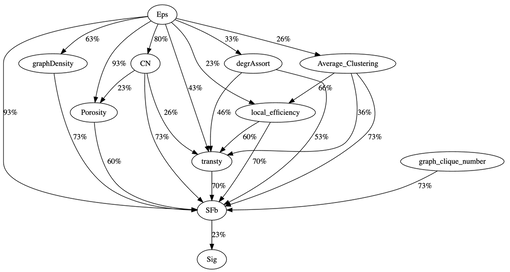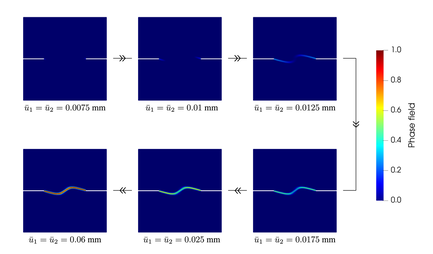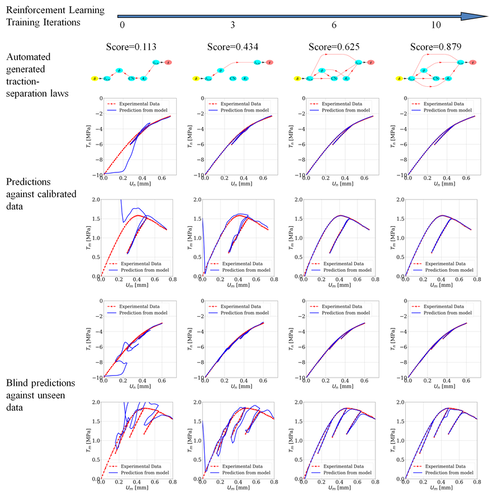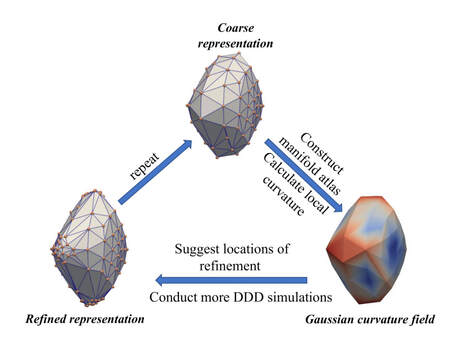Open Source Software and Data
In order to facilitate collaborations, enable third-party validation and in some cases, fulfill requirements of sponsors, we have provided a number of open source software and data. Unless specified otherwise, those software and data are protected by the Creative Commons Attribution 4.0 International License. Under this license, users must give appropriate credit and indicate if changes are made and are not allowed to apply legal terms and technological measures that legally restrict others from doing anything the license permits. Users must also acknowledge that they are using the software and data at their own risks. This page will be updated periodically.
Discovering material models with neural network + symbolic regression in feature space
|
Repository:
This repository contains the code used to generate the results presented in our paper, Discovering Interpretable Elastoplasticity Models via the Neural Polynomial Method Enabled Symbolic Regressions published in the Computer Methods in Applied Mechanics and Engineering (CMAME) journal. https://github.com/bbhm-90/SymPolyNN Related publications/suggested citations:
|
Construction of yielding manifold from DDD simulation data
|
Repository:
This repository contains the code used to generate the results from the machine learning generation of yielding manifold inferred from sub-scale finite element or discrete dislocation dynamics simulations. The data is provided by our collaborator Professor Wei Cai from Stanford University. https://github.com/stvsun/yieldingmanifold Related publications/suggested citations:
Last Updated: 2/16/2024 |
PyTorch-ABAQUS UMAT deep-learning framework for level-set plasticity

Repository:
This repository contains the code that takes experimental data and generate UMAT algorithm for ABAQUS. We use PyTorch to finish the training of MLP, put the weights and bias in a csv file and generate UMAT code. A key issue of this code is that the I/O of the csv file is taking too long, but it can be fixed by directly putting the weights and biases in the UMAT file. We were not able to do this because our collaborator required us to generate codes compatible to FORTRAN 77 for production purpose.
https://github.com/hyoungsuksuh/ABAQUS_NN
Related publications/suggested citations:
H.S. Suh, C. Kweon, B. Lester, S. Kramer, W.C. Sun, A publicly available e PyTorch-ABAQUS UMAT deep-learning framework for level-set plasticity, Mechanics of Materials, in press, 2023.
This repository contains the code that takes experimental data and generate UMAT algorithm for ABAQUS. We use PyTorch to finish the training of MLP, put the weights and bias in a csv file and generate UMAT code. A key issue of this code is that the I/O of the csv file is taking too long, but it can be fixed by directly putting the weights and biases in the UMAT file. We were not able to do this because our collaborator required us to generate codes compatible to FORTRAN 77 for production purpose.
https://github.com/hyoungsuksuh/ABAQUS_NN
Related publications/suggested citations:
H.S. Suh, C. Kweon, B. Lester, S. Kramer, W.C. Sun, A publicly available e PyTorch-ABAQUS UMAT deep-learning framework for level-set plasticity, Mechanics of Materials, in press, 2023.
Machine Learning for HMX crystal elasticity
|
Repository:
This repository contains the ML code necessary to train hyperelastic energy functional for an anisotropic material under large deformation. There are two energy conjugate pairs available, S-E and P-F. https://github.com/nnvlassis/HMX-ML-Elasticity Related publications/suggested citations:
|
Open Source tutorials on training constitutive laws for MMLDT-CSET conference
|
Tutorials
Tutorial 1: Training neural network constitutive laws. Part I: supervised learning, physics constraints and validation Tutorial 2: Training neural network constitutive laws. Part II: PyTorch vs. Tensorflow Tutorial 3: Training neural network constitutive laws. Part III: Incorporating microstructures with geometric learning Tutorial 4: Deep reinforcement learning for knowledge graph of plasticity models Lab Session: Generating constitutive laws from sub-scale DNS simulations |
Supplement Materials
Jupyter Notebook (Tensorflow) Jupyter Notebook (PyTorch) Jupyter Notebook (PyTorch Geometric) Jupyter Notebook (Collaboratory) |
Data-driven causal discovery and uncertainty propagations for constitutive laws

Repository:
https://github.com/bbhm-90/MultiGraphRNN
https://github.com/YanxunXu/MaterialLawCausal
Related publications/suggested citations:
Last Updated: 1/1/2021
https://github.com/bbhm-90/MultiGraphRNN
https://github.com/YanxunXu/MaterialLawCausal
Related publications/suggested citations:
- X. Sun, B. Bahmani, N. Vlassis, W.C. Sun, Y. Xu, Data-driven discovery of interpretable causal relations for deep learning material laws with uncertainty quantification, Granular Matter, accepted, 2021. [arxiv]
Last Updated: 1/1/2021
Implementation of phase field fracture model for micro-polar continua

Repository:
https://github.com/hyoungsuksuh/micropolar_phasefield
Related publications/suggested citations:
Last Updated: 1/1/2020
https://github.com/hyoungsuksuh/micropolar_phasefield
Related publications/suggested citations:
- H.S. Suh, W.C. Sun, An open source FEniCS implementation of a phase field fracture model for micropolar continua, International Journal of Multiscale Computational Engineering, doi:10.1615/IntJMultCompEng.2020033422, 2019.
- H.S. Suh, D. O'Conner, W.C. Sun, A phase field model for cohesive fracture in micropolar continua, Computer Methods in Applied Mechanics and Engineering, doi:10.1016/j.cma.2020.113181, 2020.
Last Updated: 1/1/2020
Discrete element simulation data for training traction-separation law

Repository (data):
https://data.mendeley.com/datasets/n5v7hyny8n/1
Repository (software):
See above (Tutorial 4)
Related publications/suggested citations:
Last Updated: 9/1/2019
https://data.mendeley.com/datasets/n5v7hyny8n/1
Repository (software):
See above (Tutorial 4)
Related publications/suggested citations:
- K. Wang, W.C. Sun, Meta-modeling game for deriving theory-consistent, micro-structure-based traction-separation laws via deep reinforcement learning, Computer Methods in Applied Mechanics and Engineering, 346:216-241, doi:10.1016/j.cma.2018.11.026, 2019. [PDF][Bibtex]
Last Updated: 9/1/2019
MATLAB code for 1D poromechanics problems

Repository: (source code)
https://bit.ly/3duTsn9
Related publications/suggested citations:
Last Updated: 9/1/2019
https://bit.ly/3duTsn9
Related publications/suggested citations:
- W.C. Sun, J.T. Ostien, A.G. Salinger, A stabilized assumed deformation gradient finite element formulation for strongly coupled poromechanical simulations at finite strain, International Journal for Numerical and Analytical Methods in Geomechanics, 37(16):2755-2788, doi:10.1002/nag.2161, 2013. [PDF] [Bibtex]
- W.C. Sun, Q. Chen, J.T. Ostien, Modeling hydro-mechanical responses of strip and circular footings on saturated collapsible geomaterials, Acta Geotechnica, 9(5):903-934, doi:10.1007/s11440-013-0276-x, 2014. [PDF] [Bibtex]
- W.C. Sun, A stabilized finite element formulation for monolithic thermo-hydro-mechanical simulations at finite strain, International Journal for Numerical Methods in Engineering, 103(11):798-839, doi:10.1002/nme.4910, 2015. [PDF] [Bibtex] (This paper is one of the 5 most cited papers from 2015 to 2016 in IJNME, and is selected for the Zienkiewicz Numerical Methods in Engineering Prize [URL #1][URL #2].
Last Updated: 9/1/2019
Disclaimer: Electronic copies of the articles are provided for convenience only. Before downloading, please check to make sure you have the right permission to download them from your institution. Unless specified otherwise, all materials are subjected to the Attribution 4.0 International (CC BY 4.0) license. If you use/incorporate/reproduce any derivation, data, idea or information from this archive in your own work, you are obligated to give appropriate credit and indicate if changes were made. We appreciate any comment, suggestion or critique, please contact [email protected].
|
|
|
Copyright @ 2014-2024. All rights reserved.






